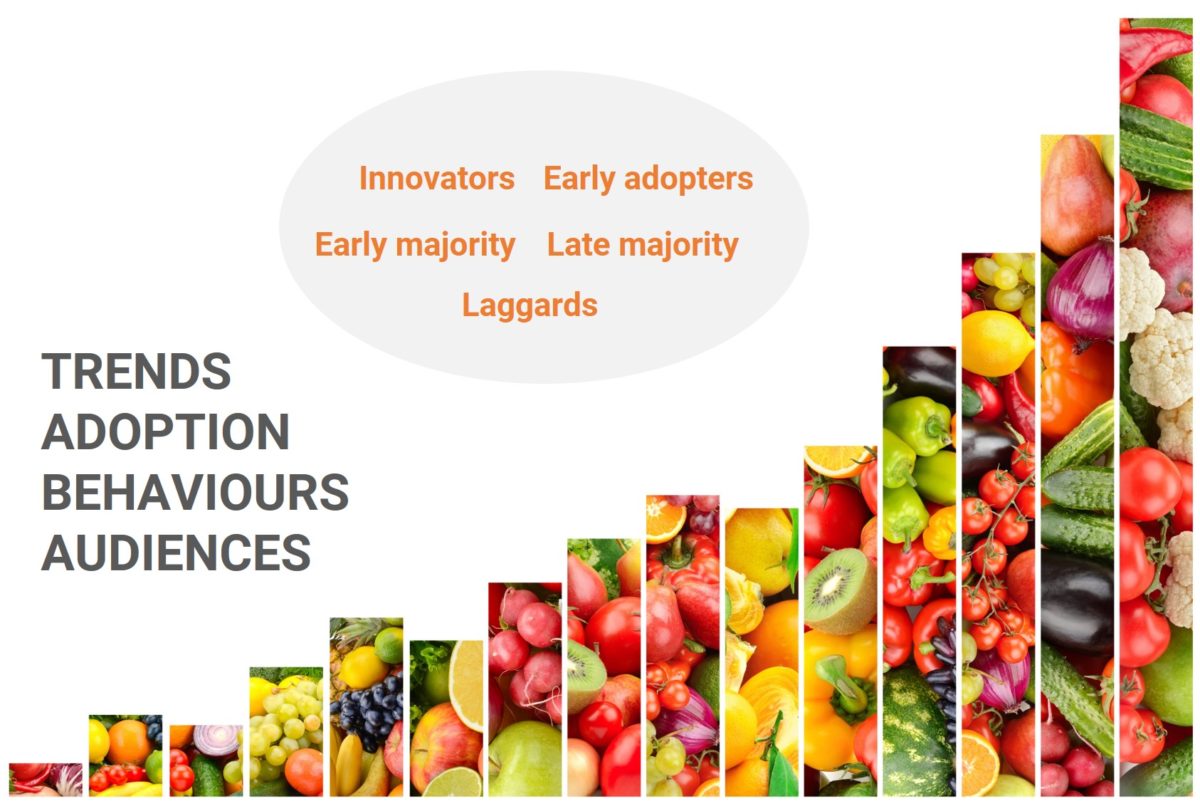Crowst Service
29/06/20Crowst introduces new consumer audiences, from Innovators to Laggards
In 1962, many world-changing events occurred. Marilyn Monroe died, Nelson Mandela got arrested, and the first Bond film, Dr No, was released. In the same year the sociologist Everett Rogers also published his book “Diffusion of Innovations”, introducing a theory that is commonly applied today in the fields of economics, marketing and technology. And for obvious reasons; it is commonly applicable and timeless. It is a theory that aims at explaining how, why, and at what rate new ideas and technology spread. This article is about the theory, consumer audiences, and how Crowst has adopted the model, introducing new addressable consumer audiences.
We are all adopters
New trends and phenomena surge, things come and go. New technology innovations, food concepts, ways to think. We are all adopters of these new things, but the rate of the adoption and the adoption stage, whether we are ahead of the curve or in the far end of it, depends on many reasons and aspects. One of these aspects are our own personal interests, the other one is common awareness and availability. The adoption can be illustrated with a curve and five main adopter segments.
Let’s assume a new technology innovation emerges. The first group to adopt the innovation is called Innovators, which represents ~2,5% of the population. They are followed by Early adopters (13,5%), Early majority (34%), Late majority (34%), and Laggards (16%). In this example, Laggards are typically those of us who are not interested in tech, or they may even hate it. This curve typically correlates with the curve representing the market share of the innovation in question. When the Early majority is onboard, the market share hits market dominance.
Interestingly, Laggards have their reasons to be slow in adoption. And they are equally individual thinkers, members of the society and “representatives of the market” as anyone else. Thus their attitude and drivers are often very interesting to explore, also from the perspective of the next or counteracting innovation to follow. Now, let’s have a look how this model integrates with the Crowst insights service platform.
Introducing audiences on food, fashion and technology
In one of our earlier blog articles, we introduced how audiences are established and enriched on the digital Crowst service platform. Establishing dedicated, specific audiences based on desired behavioural characteristics is a “standard” capability on Crowst.
Last winter we launched three background studies, which are optional for all of our respondents to respond. Think of these studies as “background mappers” that include questions designed to identify the respondents’ thinking and behaviour on a specific subject matter. The three subject matters in question are food, fashion and technology. We applied a certain formula on how to categorize the respondents based on their answers, enabling to craft the curve and identify the five main adopter segments. These studies (or “background mappers”) are always on, meaning that the addressable audience mass in each of the substance domains is growing every day.

Crowst introduces new addressable consumer audiences on food, fashion and technology.
The questionnaire structures for these background mappers were drafted in a way that they covered the perceptions and attitudes towards certain macrotrends and phenomena, the respondent’s own immediate living circle and social behaviour (e.g. activities with friends, the awareness and knowledge of the subject matter), and the respondent’s own explicitly voiced views. As a result, we now have new, targetable and growing audiences that include Innovators & Early Adopters, Early majority, Late majority and Laggards for food, fashion and technology.
The value of enriched data and audiences
So, what do the new audiences representing these three subject domains enable? By reaching out to those who are in the “know” (or in some cases, in “oblivion”) enables sourcing more valid data. If you wish to know what kind of role cheese will play in people’s diet in the next 1-3 years, it is more meaningful to target a study at Innovators and Early adopters on food. If you wish to know why some people avoid audiobooks, it may be logical to target a study at Late majority and Laggards on tech.
More refined audiences enable sourcing more relevant and reliable data for a specific need at hand. In the light of study results, it is also possible to compare the study data between different adopter groups. Audiences and behavioural information are cornerstones that help to start predicting on how trends emerge and evolve. Regardless the trend or innovation, people make things happen. The art is to match who adopts what, at which stage, and why.
The Crowst service platform offers excellent opportunities to reach specific audiences with the current targeting capabilities. In addition, you are able to establish your dedicated audiences, even matching with your product segmentation and buyer profiles.
Contact us, let’s define together what strategic advantage means in the domain of audiences in your business and in the level of insights.
Written by
Jyrki Kallinen
Tired of outdated and expensive research methods? Call or send me an email, we have the cure at Crowst.